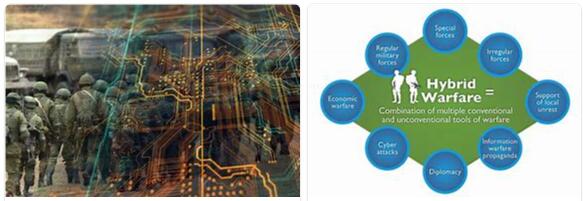Politicians and the media frequently use the term hybrid to describe various security threats to the West. These threats challenge both how we should understand them and how we should respond to them. The concept is unclear, and its use changes with what is happening in the world.
- What is the difference between conventional and unconventional warfare?
- What are the main differences between early and later thoughts on hybrid warfare?
- What challenges does the “struggle for influence” raise?
- Where is the line between war and peace?
According to homethodology, Hybrid warfare has changed from being used by non-state actors who have been able to show advanced military muscle to include methods that states – including Russia, China and Iran – have also used in recent years. To a large extent, such warfare is a mixture of conventional and unconventional use of force and coercion. This in itself is nothing new. Nevertheless, the growing, coordinated use of military and non-military means is seen as something new since it differs from the traditional, Western way of looking at war, as either conventional or unconventional. For Western security policy, this represents a major challenge – not least because it is so ambiguous and difficult to agree on a response within, for example, NATO and the EU.
2: Background to the concept
An early example of hybrid warfare is the war between Israel and the Shiite Muslim organization Hezbollah in the summer of 2006. Despite being a non-state actor, during the five-week war they showed both the ability and the capacity to resist the Israeli offensive. Many were amazed at how well-organized Hezbollah behaved – almost like a military organization. Among other things, they operated with a rocket launch system and a very advanced arsenal of weapons. These are capacities that usually only state actors have at their disposal. Now, however, the weapons were used in combination with irregular tactics. In addition, Hezbollah used a separate TV channel where they disseminated propaganda to both regional and international TV viewers. Many believe that Hezbollah’s media use was crucial for them to “win” over Israel.
In military parlance, ” unconventional warfare” often includes the use of irregular tactics, unconventional weapons and methods, as well as non-military means. Guerrilla warfare, terrorism and organized crime are typical examples. Throughout history, unconventional warfare has most often been associated with non-state actors.
” Conventional warfare” is when the regular forces of two states use traditional military weapons and tactics against each other. Hybrid warfare can be said to lie in the field of tension between conventional and unconventional warfare.
Hezbollah’s ability to combine unconventional tactics with conventional capabilities proved to be a challenge for Israel. For many military analysts, the war in 2006 was an example of blurring the line between conventional and unconventional warfare.
Since then, Russia’s actions in Crimea and in Ukraine have helped to expand the concept . The methods and means that Russia used in Crimea and in eastern Ukraine share many similarities with previous examples of non-state warfare. Therefore, both state and non-state actors are now included as possible actors in hybrid warfare and what it is. This also makes it difficult to agree on what hybrid warfare is. Does it pose a whole new challenge to how we think about war and wage war?
Some believe that we are facing a new development. Others maintain that hybrid warfare is just old methods in new disguise. Furthermore, there is disagreement about how hybrid warfare differs from other types of unconventional warfare, such as rebellion and counter-insurgency. It is nevertheless agreed that the world will see more of this type of warfare in the future – if so in different forms. In order to be able to map the challenges this entails, it is important to describe how hybrid warfare takes shape.
3: New «battlefields»
Traditionally, land, sea, air and space are considered the four military domains where war takes place. In recent years, cyber has been referred to as a new, fifth domain. Western military tradition has long been based on the fact that war mainly takes place within these domains and then as violent clashes between military units.
In hybrid warfare , space is expanded to more areas. A conflict must not necessarily be won militarily – by one party capitulating. It can also be fought and decided on a political and diplomatic level, in the information sphere, in economics and finance, culture and in cyberspace. An actor will often coordinate different activities to achieve maximum – and hopefully strategic – effect. The greater the effect an actor manages to achieve by combining non-military activities, the less need there will be to use costly military means.
Military power and the possibility of escalating the conflict into a military confrontation nevertheless remain an important element. It helps to support non-military activities. Military exercises are a typical way to remind an opponent that the threat of military force is real.









